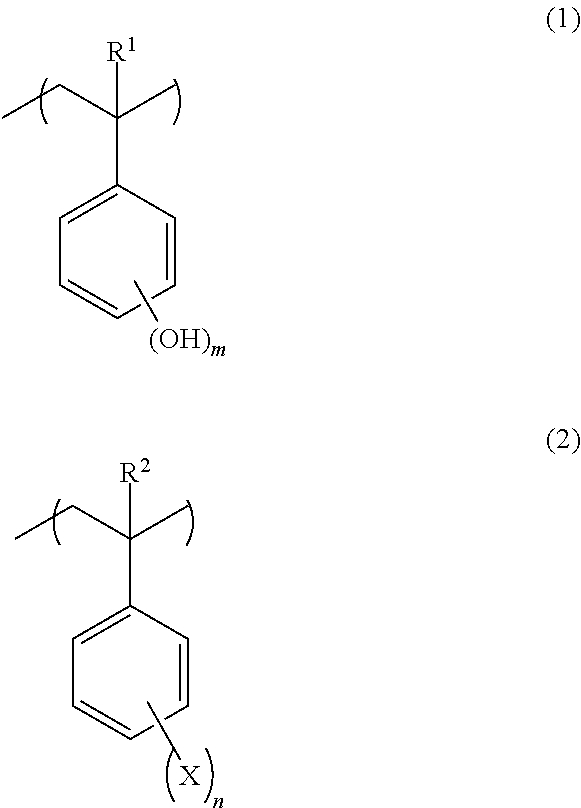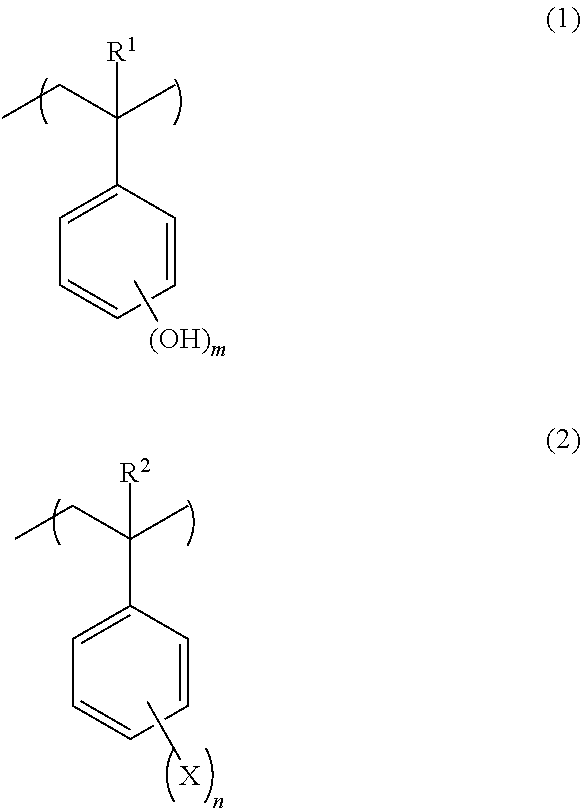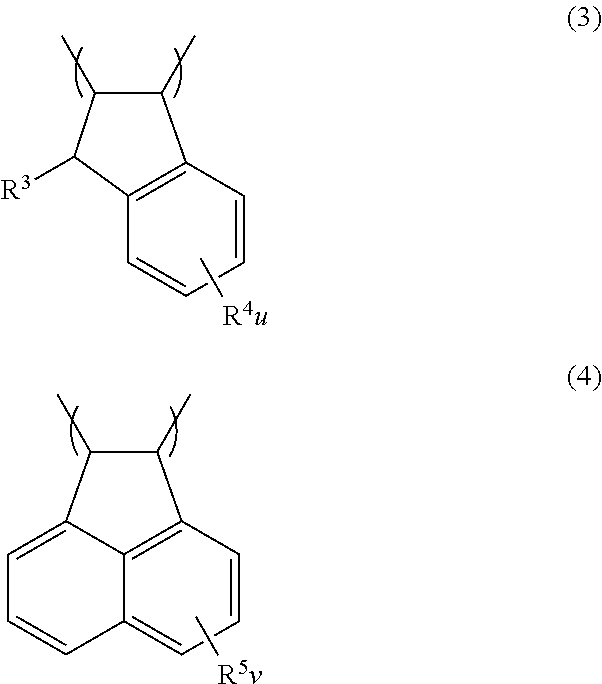Negative resist composition and patterning process
a composition and negative resist technology, applied in the field of negative resist composition and patterning process, can solve the problems of small profile change, serious problem, and so on, and achieve the effects of low substrate dependence, high resolution, and high sensitivity
- Summary
- Abstract
- Description
- Claims
- Application Information
AI Technical Summary
Benefits of technology
Problems solved by technology
Method used
Image
Examples
synthesis example 1
[0150]Poured into a flask of 3 L were 238.0 g of 4-acetoxystyrene, 22.6 g of 4-methoxystyrene, and 189.4 g of indene, as well as 675 g of toluene as a solvent. This reaction vessel was cooled down to −70° C. under nitrogen atmosphere, and repetitively subjected to degasification under reduced pressure and to a nitrogen flow, three times. After temperature elevation up to a room temperature, 40.5 g of 2.2′-azobis(2,4-dimethylvaleronitrile): V-65 (produced by Wako Pure Chemical Industries, Ltd.) as a polymerization initiator was added into the mixture; after further temperature elevation up to 45° C., reaction was conducted for 20 hours; and after temperature elevation thereafter up to 55° C., reaction was further conducted for 20 hours. This reaction solution was then concentrated to ½, and precipitated in 15.0 L of a methanol solution; and the obtained white solid was filtered, followed by drying at 40° C. under reduced pressure, to obtain 311 g of a white polymer.
[0151]This polymer...
synthesis example 2
[0158]Synthesis of a polymer was conducted in the same manner as Synthesis Example 1, while using 11.0 g of 4-methylstyrene instead of 22.6 g of 4-methoxystyrene.
[0159]The obtained polymer was subjected to 13C, 1H-NMR, and GPC measurements, thereby obtaining the following analysis results:
[0160]Copolymerization composition ratio (molar ratio):
[0161]hydroxystyrene:4-methylstyrene:indene=76.9:12.9:10.2
[0162]Weight-average molecular weight (Mw)=4,100
[0163]Molecular weight distribution (Mw / Mn)=1.58
[0164]This polymer was regarded as (Polymer-2).
synthesis example 3
[0165]Poured into a flask of 3 L were 222.0 g of acetoxystyrene, 32.6 g of 4-methoxystyrene, and 30.0 g of acenaphthylene, as well as 675 g of toluene as a solvent. This reaction vessel was cooled down to −70° C. under nitrogen atmosphere, and repetitively subjected to degasification under reduced pressure and to a nitrogen flow, three times. After temperature elevation up to a room temperature, 40.1 g of 2.2′-azobis(2,4-dimethylvaleronitrile): V-65 (produced by Wako Pure Chemical Industries, Ltd.) as a polymerization initiator was added into the mixture; after further temperature elevation up to 45° C., reaction was conducted for 20 hours; and after temperature elevation thereafter up to 55° C., reaction was further conducted for 20 hours. This reaction solution was then concentrated to ½, and precipitated in 15.0 L of a methanol solution; and the obtained white solid was filtered, followed by drying at 40° C. under reduced pressure, to obtain 299 g of a white polymer.
[0166]This po...
PUM
| Property | Measurement | Unit |
|---|---|---|
| thickness | aaaaa | aaaaa |
| wavelength | aaaaa | aaaaa |
| size | aaaaa | aaaaa |
Abstract
Description
Claims
Application Information
 Login to View More
Login to View More - R&D
- Intellectual Property
- Life Sciences
- Materials
- Tech Scout
- Unparalleled Data Quality
- Higher Quality Content
- 60% Fewer Hallucinations
Browse by: Latest US Patents, China's latest patents, Technical Efficacy Thesaurus, Application Domain, Technology Topic, Popular Technical Reports.
© 2025 PatSnap. All rights reserved.Legal|Privacy policy|Modern Slavery Act Transparency Statement|Sitemap|About US| Contact US: help@patsnap.com



